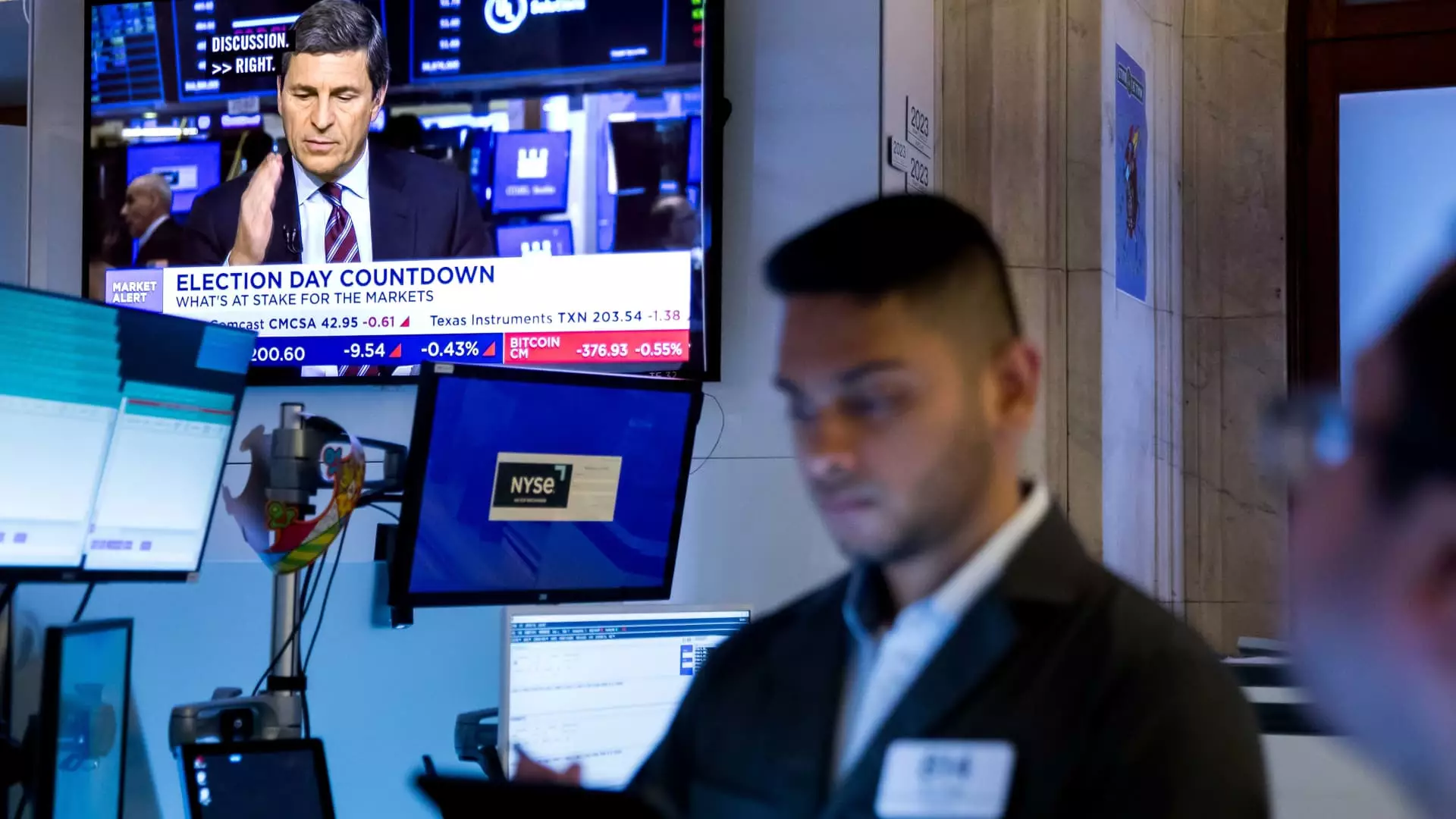In the world of finance, staying informed is pivotal, particularly on the eve of significant events such as elections. This analysis delves into recent market fluctuations and investment patterns, especially focusing on sectors like technology, cannabis, and water resources, as they play crucial roles for investors seeking potential opportunities.
Recent statements by prominent investors have influenced investor sentiment significantly. David Tepper, an esteemed figure in investment circles known for his acumen, urged followers to consider buying into China’s market. His announcement seems to have momentarily revitalized interest in Chinese stocks, as reflected in the notable rise of the KraneShares CSI China Internet ETF (KWEB) by 11% shortly after his call. However, beneath this bullish overlay lies a stark reality — these ETFs have since fallen downwards, with KWEB showing a substantial decline of 17% since October 7.
Investors should equally note the nuanced state of the iShares MSCI China ETF (MCHI), which has observed a drop of 16.6% since the peak that followed Tepper’s remarks. Such volatility highlights the challenges investors face in a rapidly changing geopolitical and economic landscape. Moreover, there’s skepticism surrounding the sustainability of any gains, given that the broader market sentiment is still cautious ahead of the pivotal elections.
As the U.S. approaches Election Day, four states — Florida, Nebraska, North Dakota, and South Dakota — will vote on legalizing cannabis. The anticipation around these results has led to a surge in cannabis-related stocks, reflecting an uptick in investor confidence in this burgeoning market. In the past month alone, market players have witnessed Canopy Growth leap by an impressive 24%, while competitors like Aurora and Scotts Miracle-Gro also posted decent gains of 8.7% and nearly 10%, respectively.
With more states potentially joining the movement towards legalization, these stocks may be indicative of a larger trend. The broader acceptance of cannabis can catalyze further investment, prompting considerable shifts in market dynamics. Investors who can foresee these changes may find significant opportunities in what many consider an evolving asset class.
The current climate crisis has led to water shortages in regions such as New York, which is now experiencing its worst dry spell since 1869. This alarming situation has underscored the importance of water resource management, thus propelling companies related to this sector. Stocks like Energy Recovery and Global Water Resources have demonstrated notable resilience, with Energy Recovery up 9.6% in the past month, while Global Water Resources has seen year-on-year growth of about 16%.
The investment community appears increasingly aware of the significance of water resources not only as a necessity but also as a lucrative investment opportunity. With utilities like Essential Utilities and ETFs such as the Invesco Water Resources ETF (PHO) posturing well in the market, there remains a strong case for investment in water-related sectors driven by both necessity and profitability.
Despite pockets of resilience in certain sectors, caution is warranted as investors navigate a fluctuating economic landscape. Firms like Yum Brands have faced declines amid operational challenges, with stock prices hovering significantly below their peak values from earlier in the year. This trend serves as a stark reminder that while some sectors flourish, others grapple with instability, leading to varied investment outcomes across the board.
Meanwhile, investment firms reporting earnings on the horizon, such as Apollo, exhibit a 35% rise over the past three months, showcasing market variability. Companies will need to adeptly manage investor expectations, particularly in an environment rife with uncertainty tied to economic indicators and political developments.
Overall, as investors prepare for tomorrow’s market, it is crucial to analyze current trends critically. Understanding the dynamics at play not only enables informed decision-making but also enhances the potential for strategic investments across burgeoning sectors. The combination of legislative developments, market volatility, and sector resilience will define the financial landscape in the coming weeks, urging investors to remain vigilant and proactive in their strategies.

